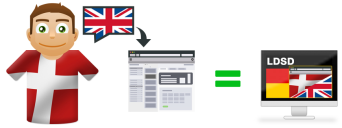The application interface language
In addition to the designable parts of your system appearing in the user's culture, the Web Access and Ivanti Workspaces application interfaces appear in the culture of the current user, provided that their culture is one of the cultures that Service Desk or Asset Manager is localised into: de-DE (German), en-GB (British English), en-US (American English), es-ES (Spanish), fr-FR (French), it-IT (Italian), ja-JP (Japanese), pl-PL (Polish), pt-BR (Brazilian Portuguese), ru-RU (Russian), or zh-CN (Simplified Chinese).
This functionality is not available for the console.
The application interface language in Web Access and Ivanti Workspaces is determined as follows:
- If a user's culture is set to one of the supported cultures, then the user interface appears in that language.
- If a user's culture is not specified, or is set to a culture that is not supported, then the user interface appears in the language of the user's browser or mobile device if that is a supported language.
- If neither the user's culture nor the browser/device language are supported, then the user interface appears in the language specified during the installation.
For example, a Danish analyst using a Danish browser on a German system would see process windows in Danish and the application interface in German because Danish is not a supported language.
If this analyst's preferred second language was English, they could change their browser language to English, and then they would see process windows in Danish and the application interface in English.
The Sign In page appears in the language of the user's browser, because at that point the user's identity is not known.

